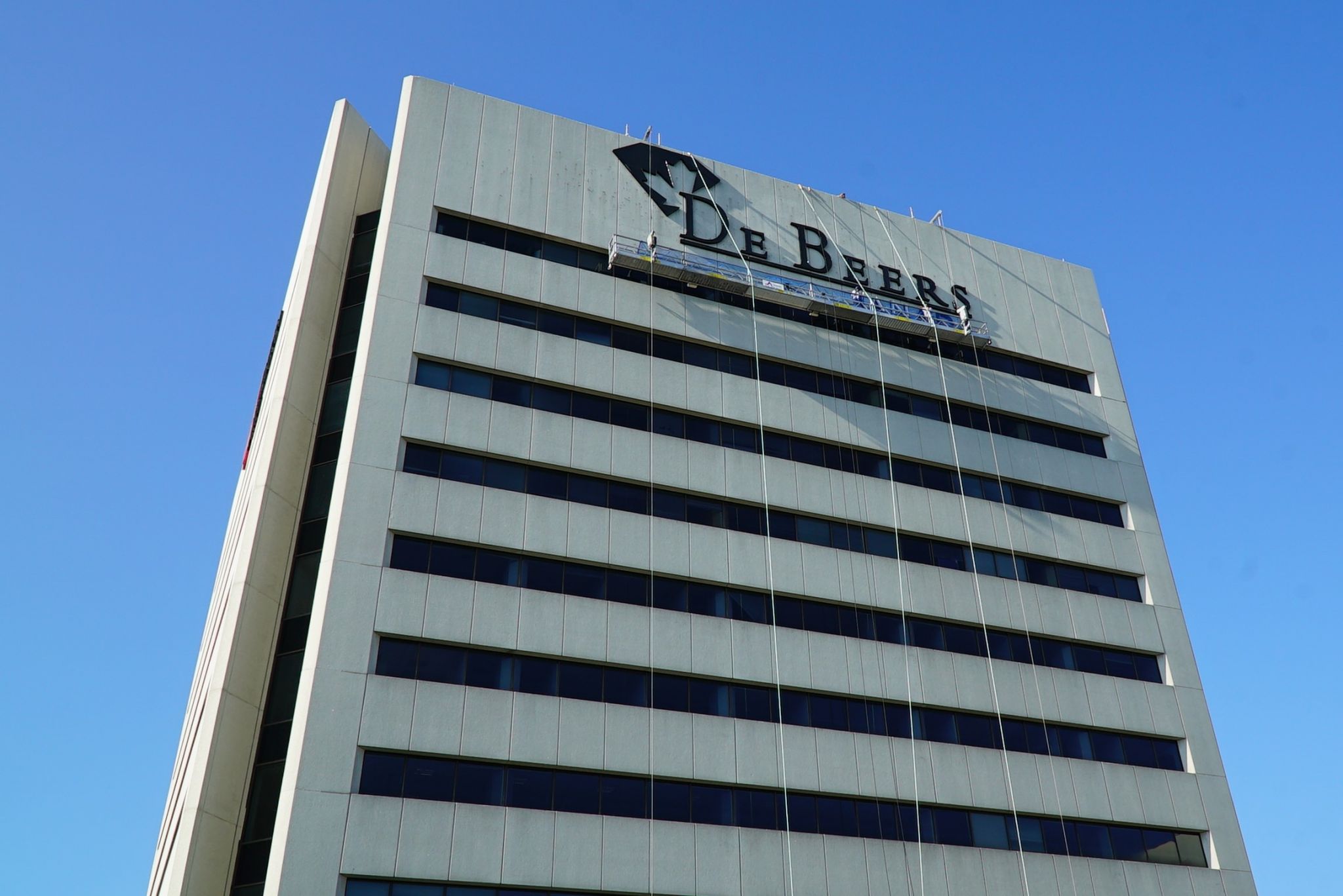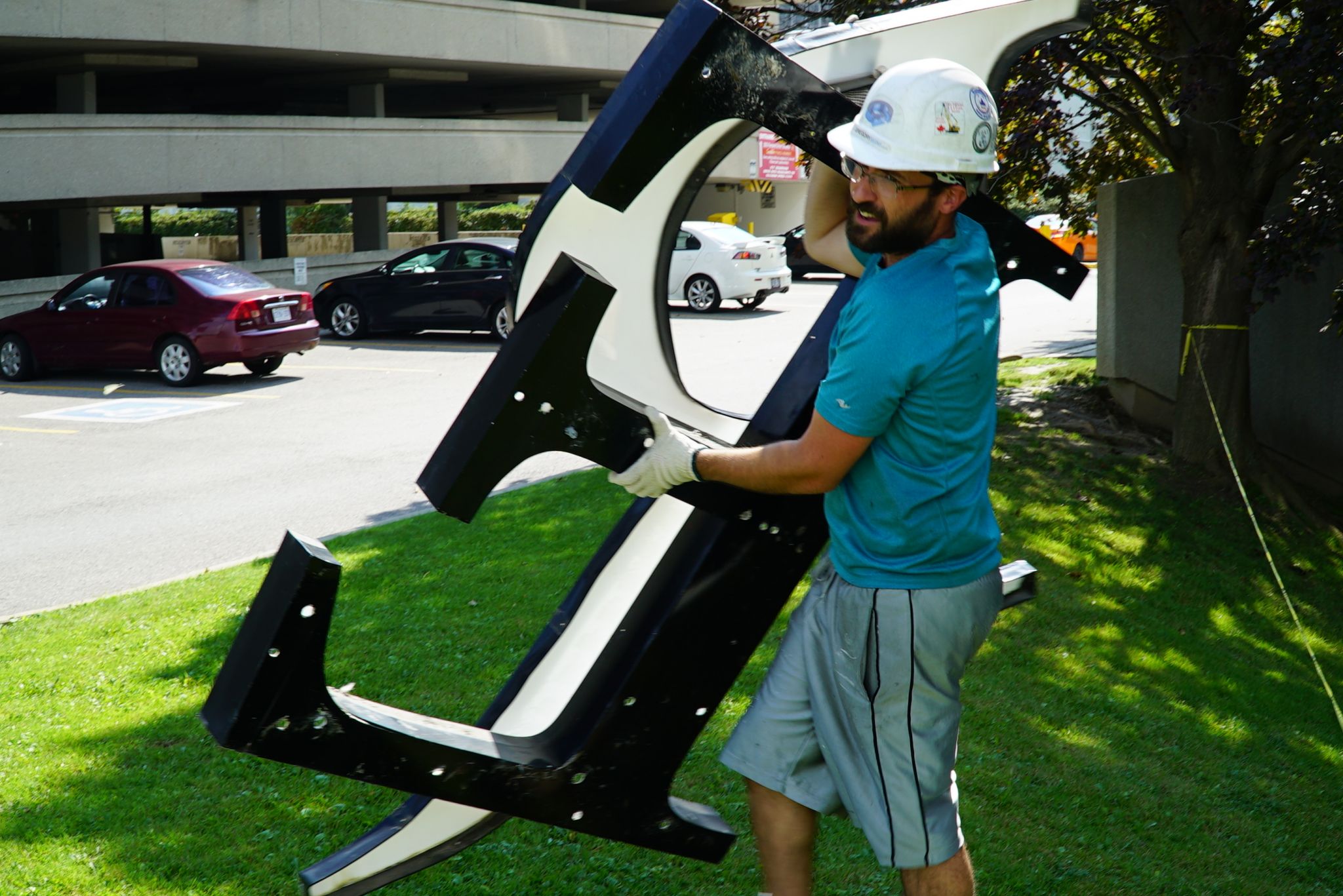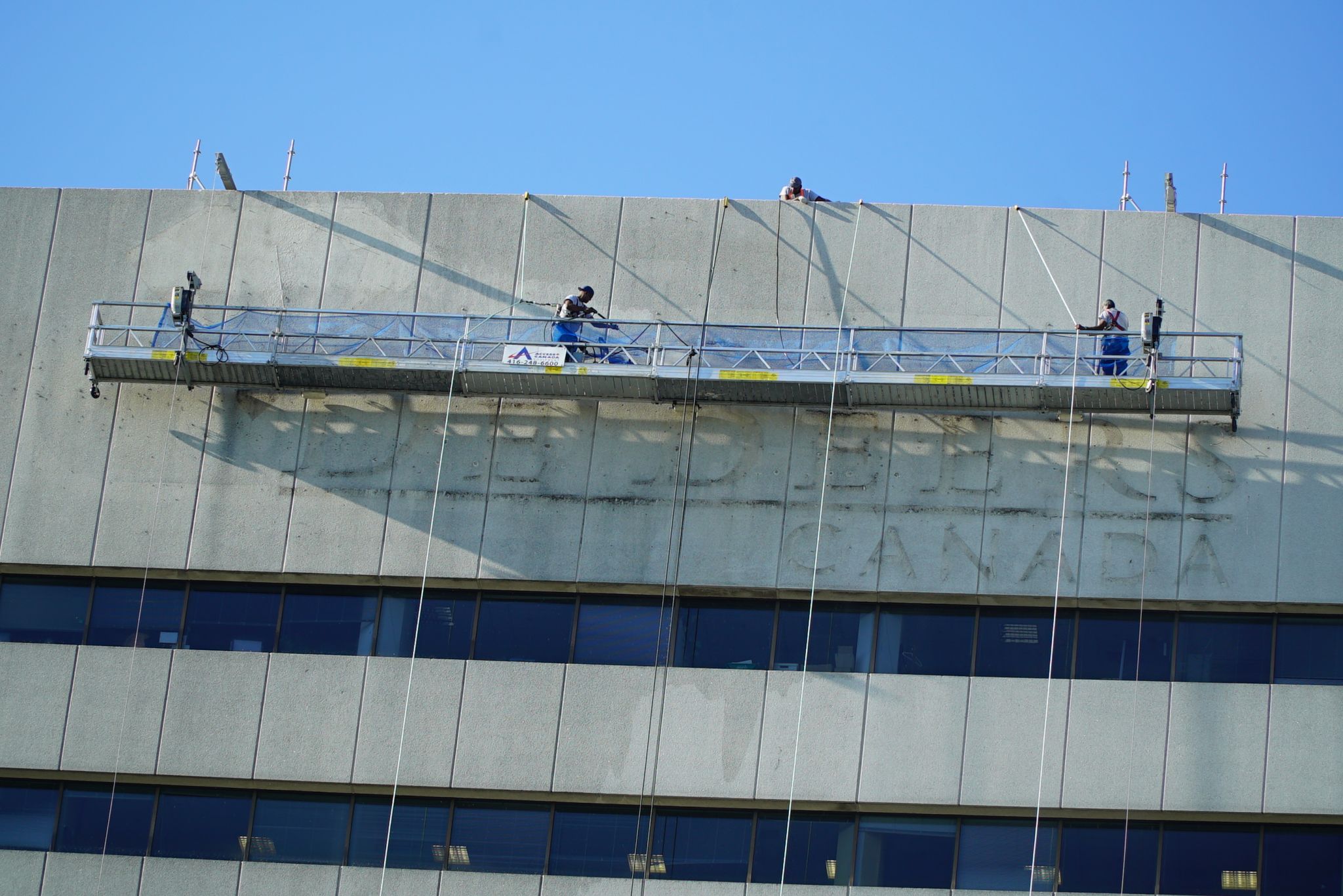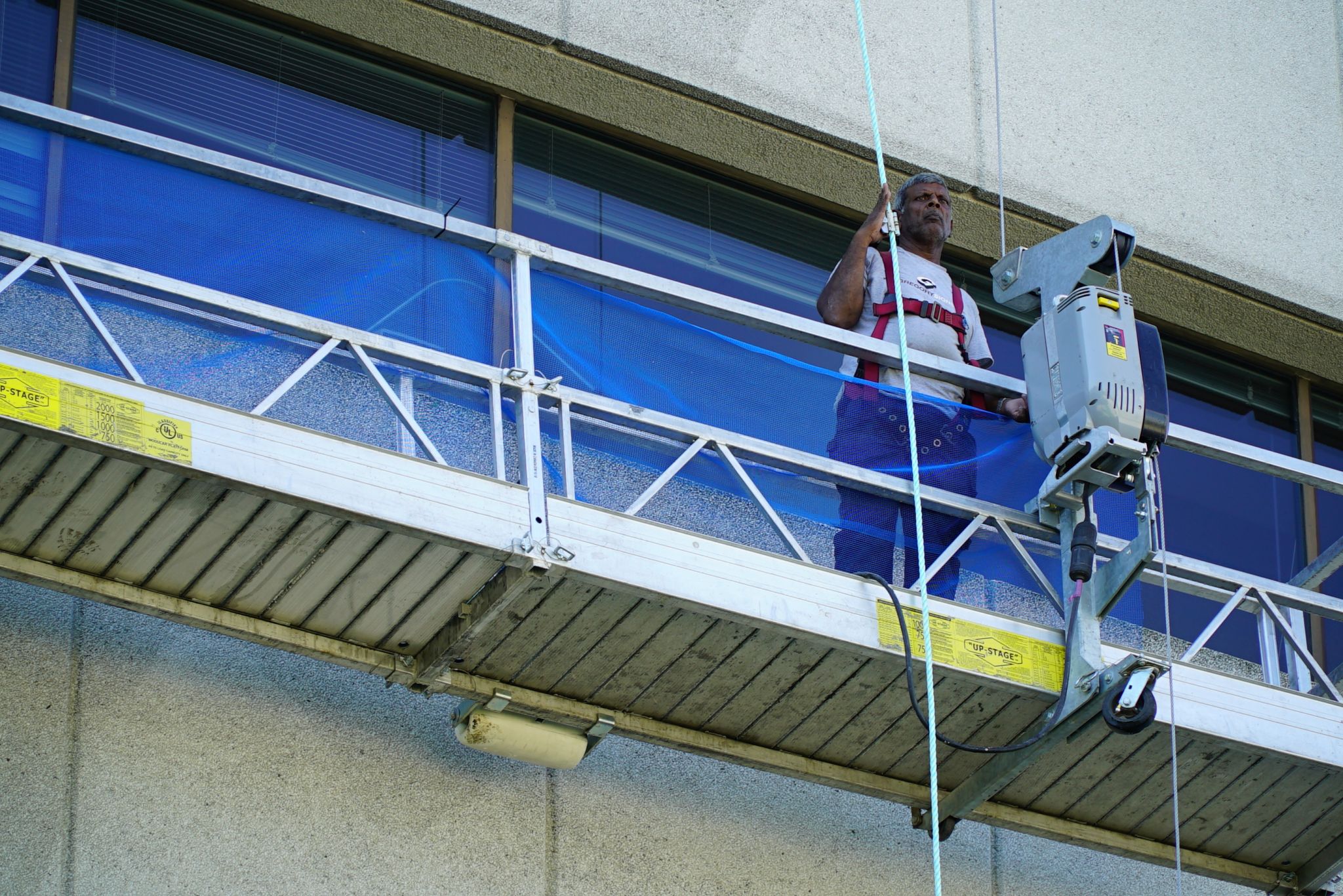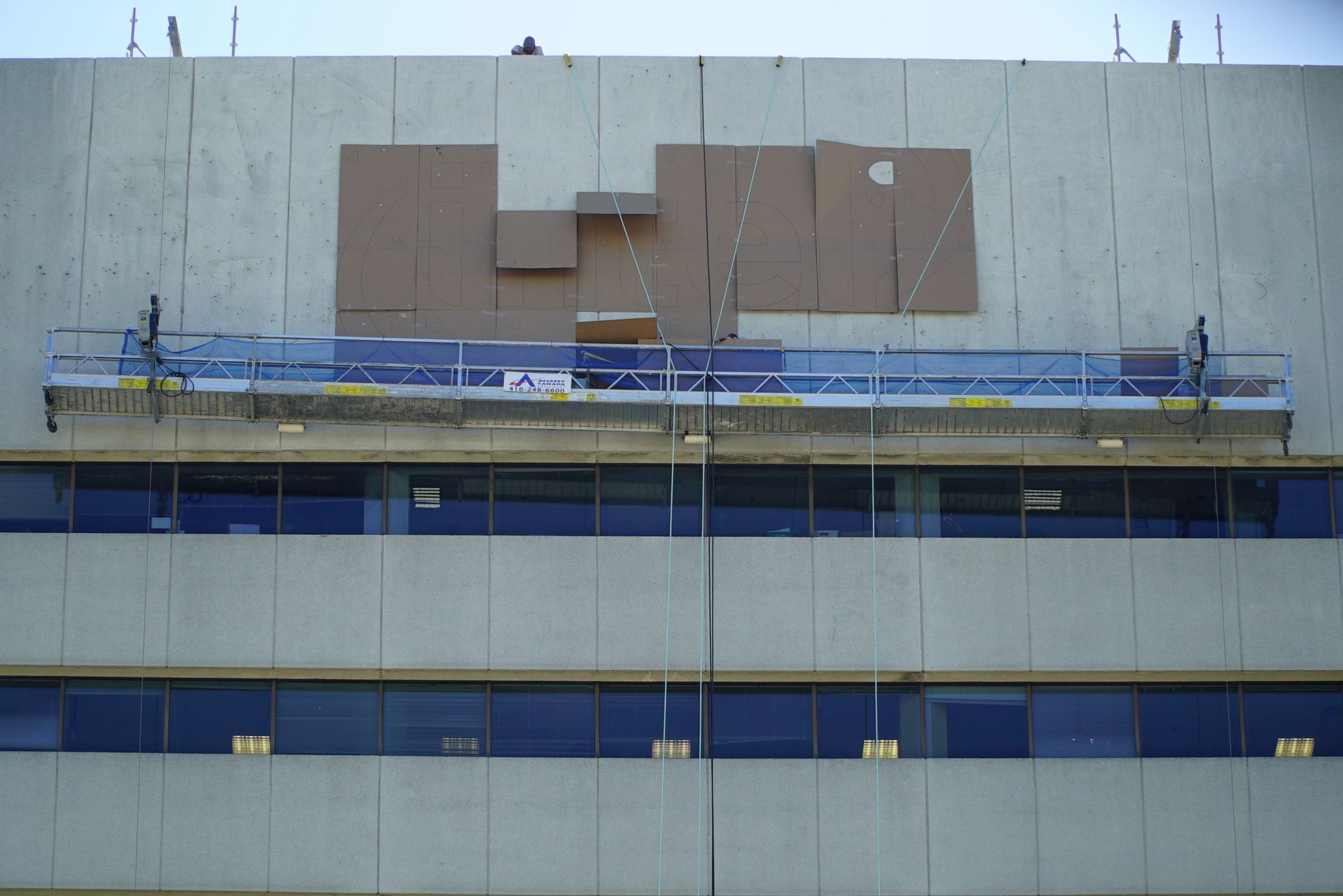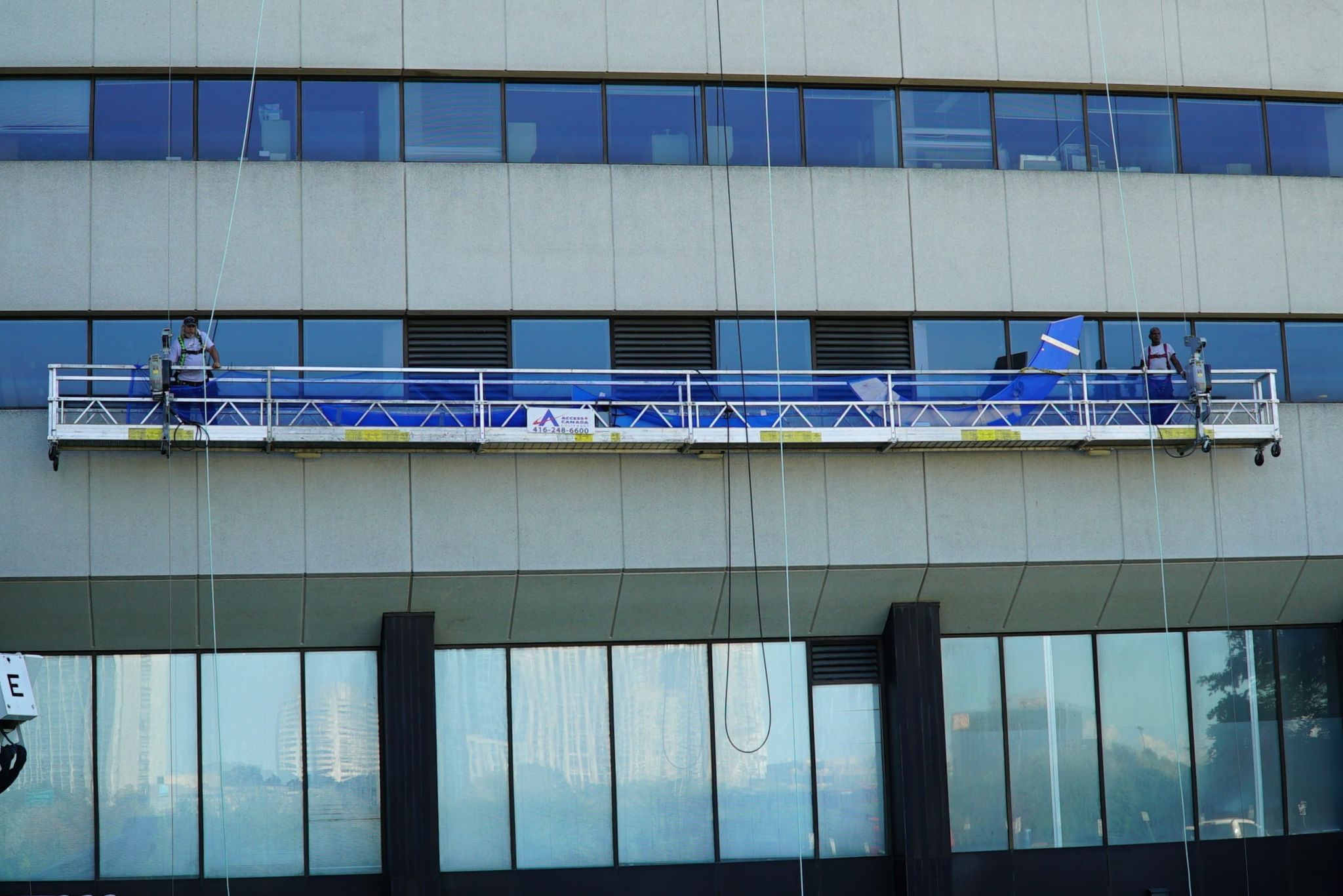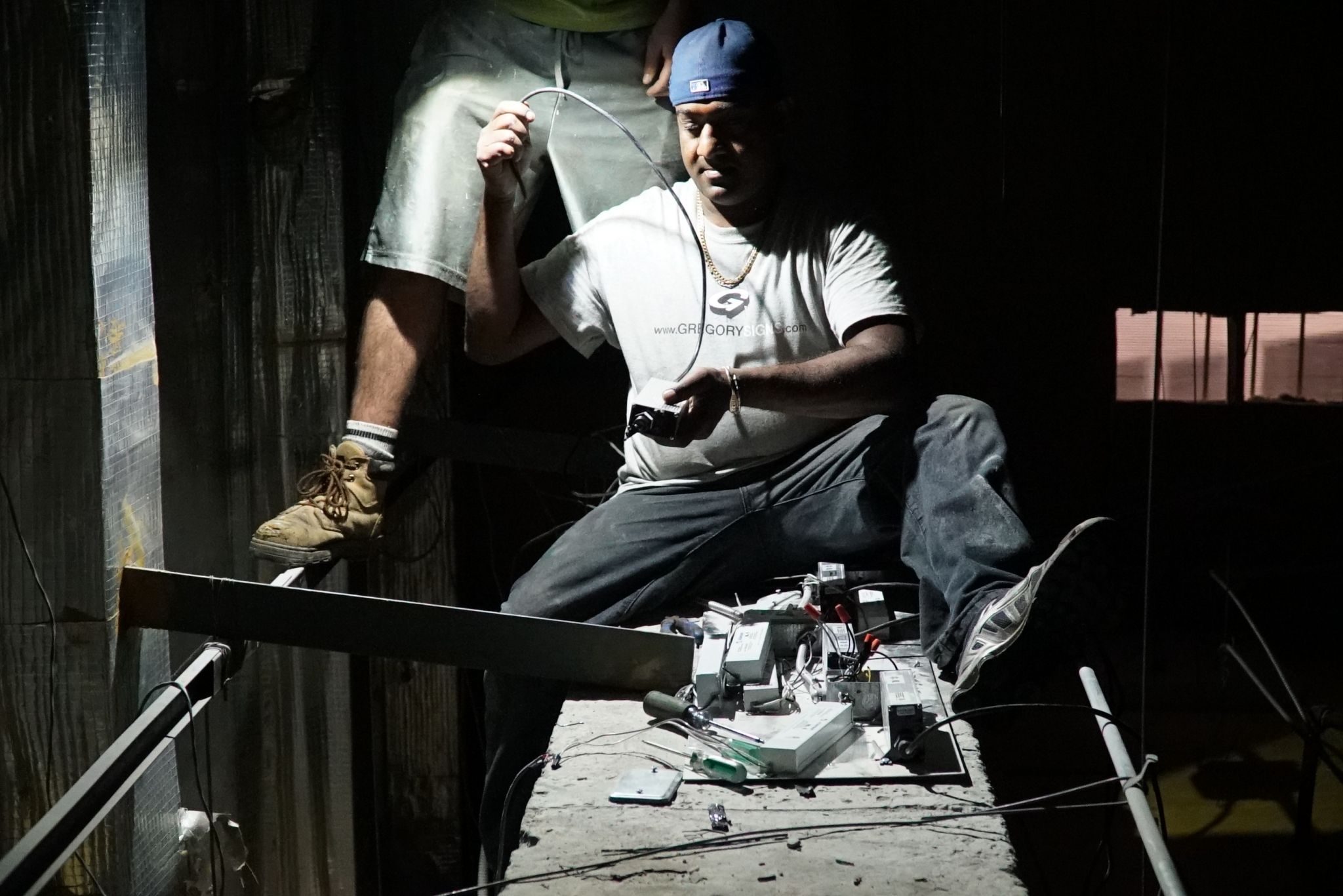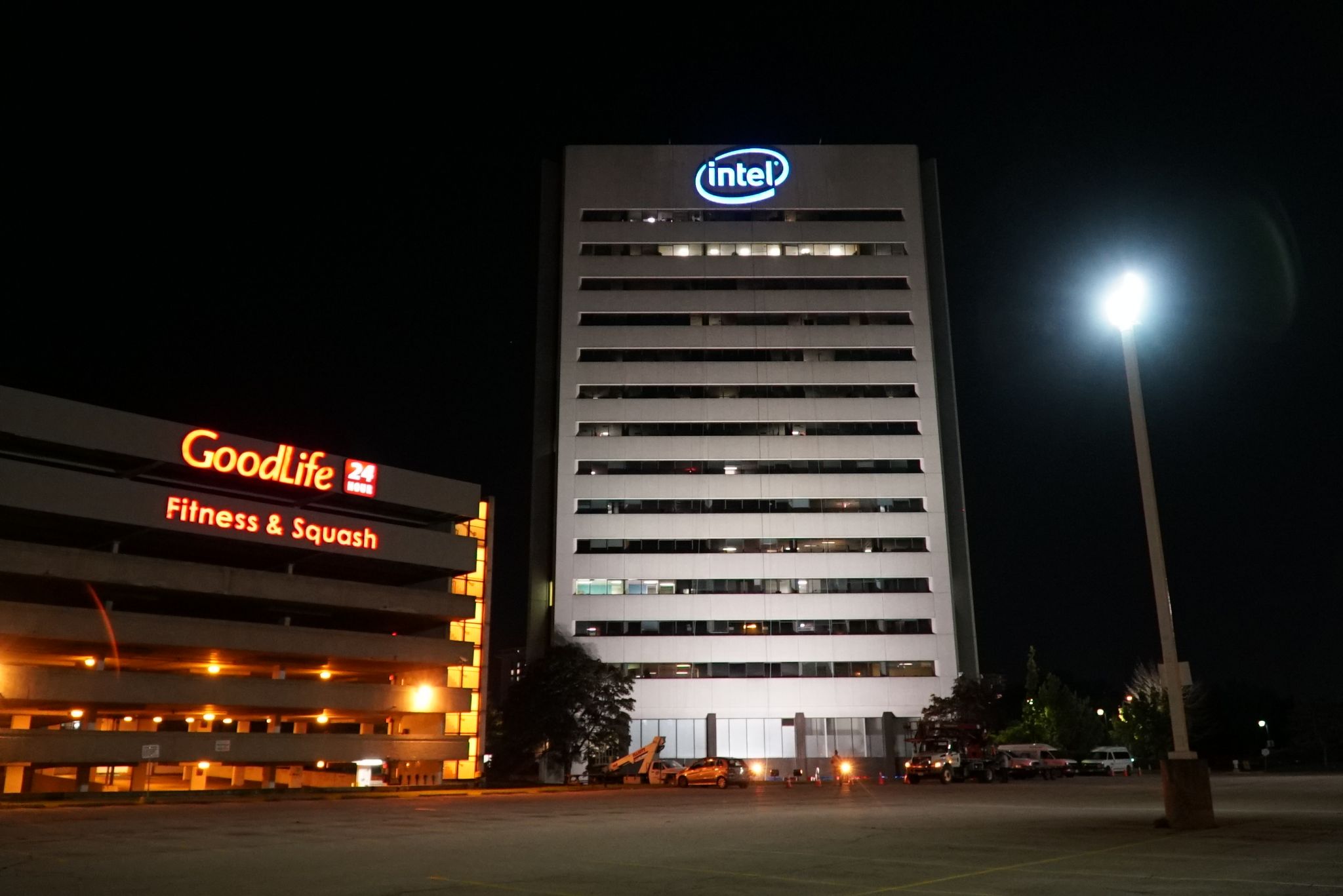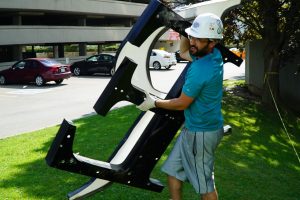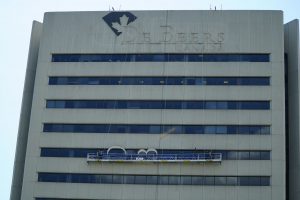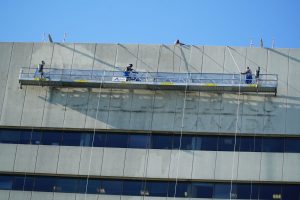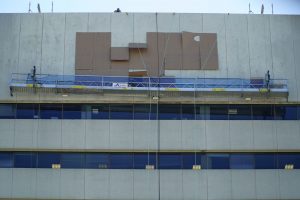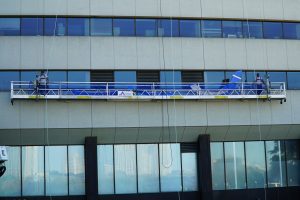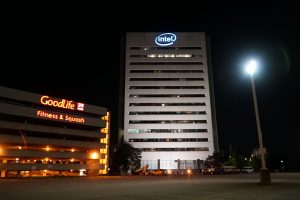Gregory Signs: A one-stop solution
by | 17 July 2019 3:58 pm
By Sonia Yooshing
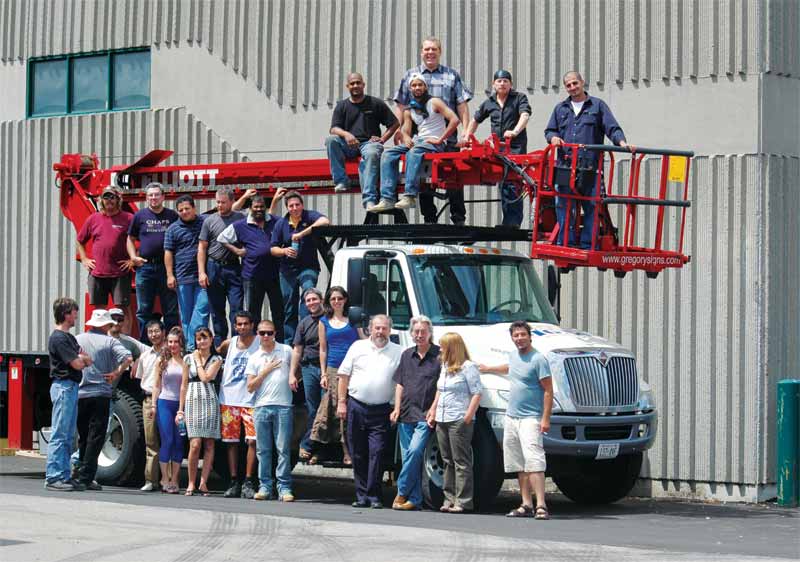 [1]
[1]
Signage is a crucial component of any successful business’s identity; therefore, it is imperative a sign projects a consistent and appealing message for its clientele. Whether it is starting a business or rebranding one, the most important, and perhaps the most challenging, task of all is drawing the attention of potential customers to one’s work and painting the business’s reputation in the most positive light.
Boris Kaminsky, vice-president of sales and marketing for Vaughan, Ont.-based Gregory Signs, believes the sign shop has been successful in accomplishing this and much more. Finding the precise words, as well as the right channel and images to promote one’s business to a targeted clientele, is an indispensable part of the job and mandates the attention of an expert. Needless to say, if the task is handled efficiently, it can set the pace for a lucrative undertaking.
At Gregory Signs, companies of all size find the advertising expertise they need to help differentiate their business from the competition. “You only have one shot upfront to get your message across to the potential customer, so make it count,” says Kaminsky.
When it comes to branding, the design team at Gregory Signs is always on the lookout for new products and technology, and is constantly seeking new ways to implement their creative ideas in a way that singles out their client’s business from the rest. Whether it is a logo for a startup or redesigning one for an existing business, the sign shop provides the best product and value to its customers.
Sign Media Canada recently spoke with Kaminsky about the company and their signmaking process, what the future entails, and any interesting projects in the pipeline.
Sign Media Canada (SMC): What is the history of the sign shop and how has the business evolved over the years?
Boris Kaminsky (BK): Gregory Signs started as an engraving shop in 1981 and has expanded over the years to meet customers’ demands. We now provide a range of services including designing, consulting, manufacturing, and installing custom signage, sign systems and programs. In addition, we also create outdoor advertising packages.
 [2]
[2]The company often conducts safety training programs for employees to provide them with tips on how to use sign installation properly.
Today, the manufacturing facility is nearly 1858 m2 (20,000 sf) while the sales unit and showroom spans approximately 372 m2 (4000 sf). The business has evolved by leaps and bounds, as is evident from our extensive portfolio, with our clients spread out across North America.
Our mission is to earn the recognition of our customers, employees, suppliers, and the community as one of the highest quality performers—in every aspect of our operation—in the sign industry. To accomplish our goals, we ensure our customers receive the best overall value for the products or services they purchase; we work hard to make this process as convenient as possible.
Our team constantly strives toward improving their methods of production and service range to maintain our position as a market leader. We collaborate with our clients to develop products that not only meet their specific needs, but also help create an enviable first impression.
SMC: What type of signage does your shop primarily make? How much of the signmaking process is handled in-house?
BK: Our sign shop specializes in custom interior and exterior signage. Nearly 99 per cent of the work is done in-house. We do everything, from canopies and awnings to channel letters, light-emitting diode (LED) boards, fascia boxes, plaques, menu boards, and architectural custom displays. The company also specializes in services such as exporting, consulting and project management, permits, and site surveying. We offer a one-stop solution for our clients.
Your sign is a direct reflection of your business’s image, and Gregory Signs can help you build one. Our unswerving commitment to quality craftsmanship empowers us to gladly take on challenges (no matter how big or small).
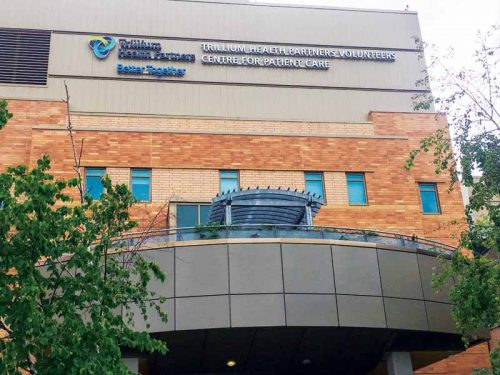 [3]
[3]When it comes to branding, the design team at Gregory Signs is always on the lookout for new products and technology, and is constantly seeking new ways to implement their creative ideas in a way that singles out their client’s business from the rest.
SMC: What kind of projects have you been working on recently?
BK: We are heavily involved with the transportation industry such as the Toronto Transit Commission (TTC), Crosslinx Transit Solutions (CTS), Metrolinx, and GO Transit. We are currently manufacturing and installing signs for the TTC’s new development and renovation projects. Recently, we were commissioned for a $4-million contract for the Eglinton Crosstown expansion for 14 stations.
Our staff is also busy with supplying and installing interior and exterior signage for the Ontario Provincial Police (OPP) stations across the province. We are also working with Bird Construction on the new Niagara Entertainment Complex. This is an exciting project as we will be doing everything, right from design consulting to interior and exterior signage. Currently, we are also working on wayfinding signage for cemeteries. This type of work is new to us, but we are thoroughly enjoying it.
Among these, we have also been awarded a mall renovation project in Boca Raton, Fla., to remove existing signs and install temporary signs during construction, channel letters, and new pylon signs.
Gregory Signs also specializes in high-rise signage where we work closely with architects and design firms on sign programs and wayfinding packages before they go out to tender.
We have a huge client list including EllisDon, PCL, Buttcon Ltd., Maystar, Vestacon, Arguson Projects Inc., Forge, Icon, Envision, and Modulex, to name a few.
We service and install signs across Ontario, but have local installers take care of projects across the province. Many of our clients are located or have jobs around the globe. We have been shipping signs to the Dominican Republic, England, United States (Chicago, New York, Virginia, and Florida), and Canada (Alberta, British Columbia, and Manitoba).
Our shop also manufactures signs for TAG, Breitling, and Omega watches for a local company in Toronto that are shipped across North America.
SMC: What type of equipment do you currently use to complete your sign projects?
BK: At the moment, we have two computer numerical control (CNC) machines, HP printers, an Epson printer, a Vutek plotter, a laminator, two paint systems—AkzoNobel and Matthews Paint, and a spray booth. We also use a bending machine, a waterjet cutting machine, metal inert gas (MIG) and tungsten inert gas (TIG) welding equipment, break and drill presses, and shears. Our installation equipment comprises crane and bucket trucks, scissor lifts, and Genie lifts.
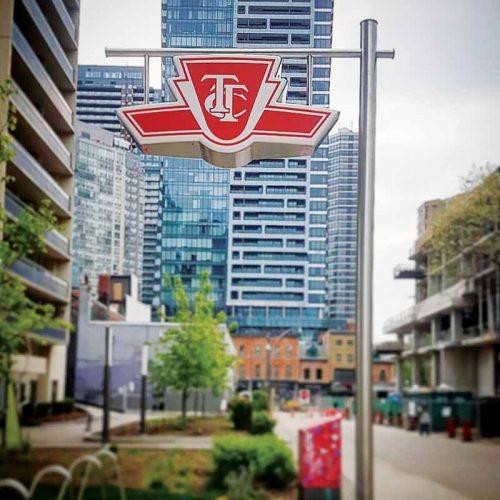 [4]
[4]The Sign Shop is currently installing and manufacturing signs for Toronto Transit Commission’s (TTC’s) new and development and renovation programs.
SMC: What does your planning and design process involve?
BK: We like to invest time in design and planning; this is a critical stage in the sign development process and should not be rushed. Some projects can range from $250,000 to $1 million. We conduct site checks and content reviews before we start with the design layout. For example, we carefully check to ensure all the arrows are pointing in the right direction, the sign is located appropriately where it can be seen clearly, the wall where the sign is to be installed and the sign itself are not of contrasting colours, etc.
We take several preliminary measures before signs go into production. Most of the time, we are awarded signage projects when the building construction has just started. Therefore, it is important we try to nail down all this information as soon as possible, so we can start production and make sure the signs are ready for installation.
Our project managers are hands on and frequently visit sites to check on the job’s progress and to see if anything has changed. In many cases, things get altered during the construction process, especially when it comes to mechanical and electrical jobs. For example, a sign may have been designated a particular spot, but once the building is complete, a steel beam may be in the way because nobody informed us about the last-minute change, or a fire alarm was placed where a sign was to be installed. We need to be prepared for these changes, too.
SMC: What makes Gregory Signs different from other companies in the industry?
BK: Gregory Signs has a simple approach—we treat our customers the same way we would like to be treated. Irrespective of the size of the company or its project, we collaborate with both international and small local organizations.
We are continuously developing our systems and work practices to improve efficiencies and abilities so we can foster strong and lasting relationships with our customers. We believe in being honest about our products and services and strive to provide unparalleled customer service with every engagement.
Corporate social responsibility is also a top priority for us. We provide our products to various non-profit organizations and extend our services to worthy causes; after all, the small things we do as a company can have a large impact on others’ needs.
Last but not least, our employees are our asset. The growth of individual team members drives the success of our company. Employees are motivated to perform when their efforts are recognized, and they are rewarded for their skills and talent. We also see our suppliers and subcontractors as part of our team, and continue to develop a network of external associates to assist us in delivering what we promise.
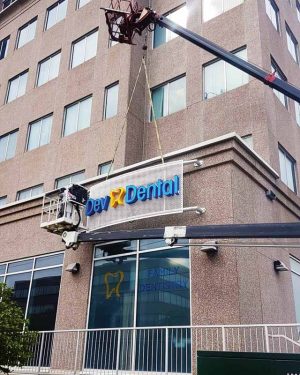 [5]
[5]The company provides a range of services including designing, manufacturing, consulting, and installing custom signage, sign systems and programs, and also creates outdoor advertising packages
SMC: How is technology changing your business? What do you think is the key to staying successful in the industry?
BK: Technology is definitely helping us expand our product lines and produce things faster. However, we pride ourselves in the quality of our products, and to us, our people are the most important.
The key to staying successful in the sign industry is to never stay in one place; continue to change and evolve with the times.
SMC: What are the future plans for your business?
BK: Our future plans are to continue to expand the company’s business operations. At the moment, we are concentrating our efforts toward enhancing our design, consulting, and project management services. We are also looking at opening various sales and project management offices across North America.
- [Image]: https://www.signmedia.ca/wp-content/uploads/2019/07/SSP_DSC_0562.jpg
- [Image]: https://www.signmedia.ca/wp-content/uploads/2019/07/SSP_DSC02509.jpg
- [Image]: https://www.signmedia.ca/wp-content/uploads/2019/07/SSP_tillium.jpg
- [Image]: https://www.signmedia.ca/wp-content/uploads/2019/07/SSP_IMG_20190531_175549_488.jpg
- [Image]: https://www.signmedia.ca/wp-content/uploads/2019/07/SSP_IMG_20190605_110214_987.jpg
Source URL: https://www.signmedia.ca/gregory-signs-a-one-stop-solution/
